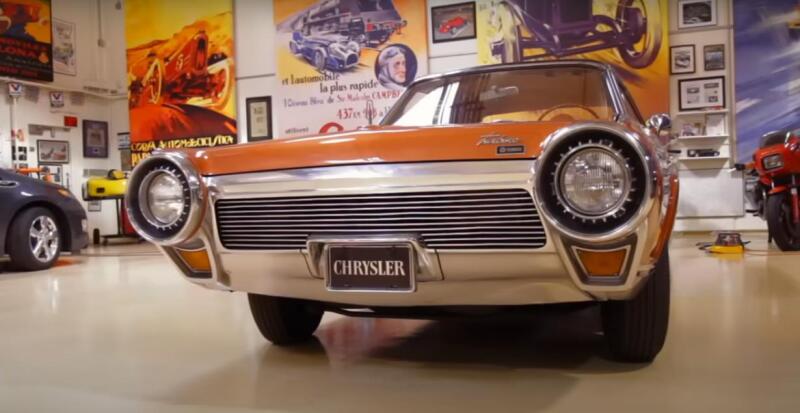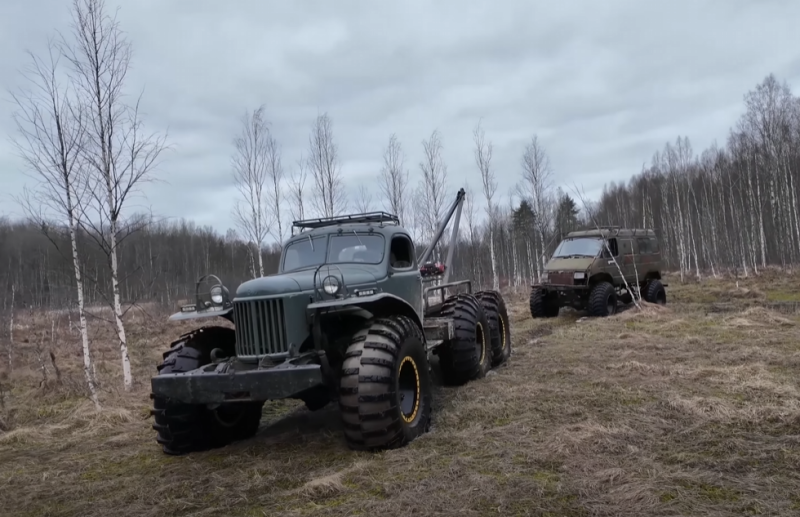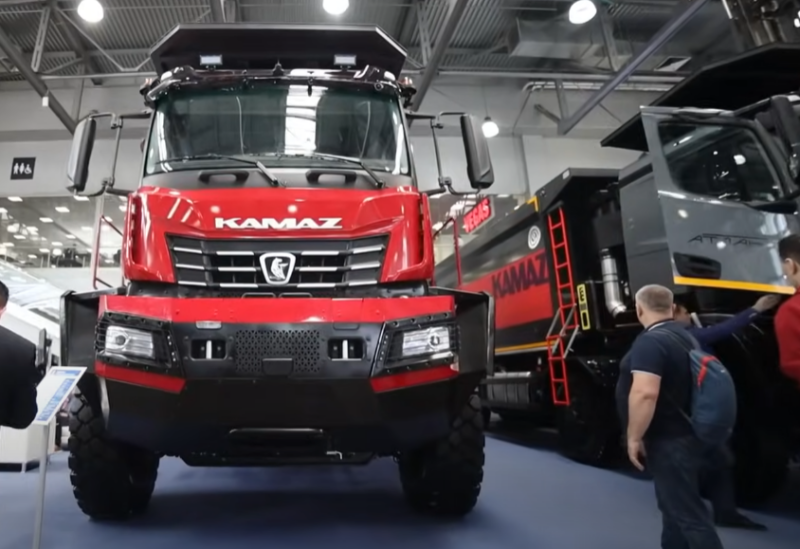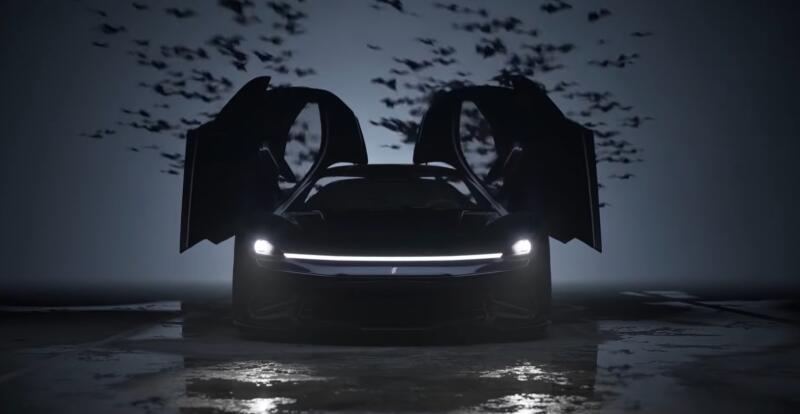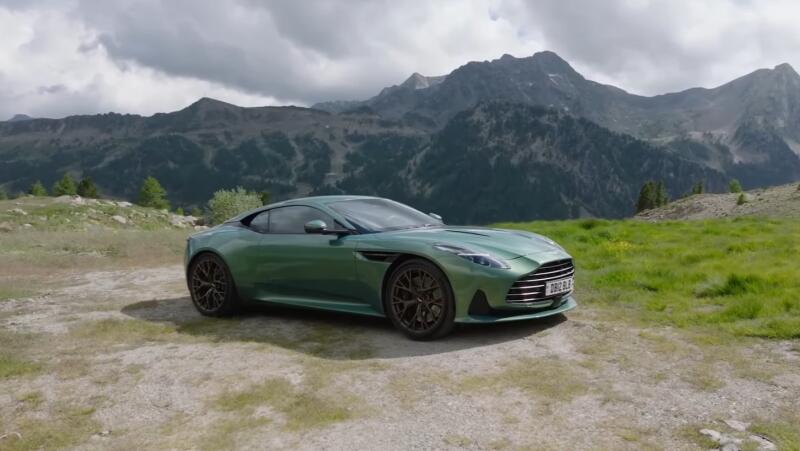George Huebner's Dream
Chrysler Corporation began researching gas turbine engines back in the 1930s, but passenger cars were not on the list of potential uses for such power units.
The project was secret and focused on aviation. A group of selected employees worked on it, including the well-known engineer George Huebner. This is the man who became famous for creating the 16 hp V-2500 fighter engine. With. called XI-2220 and Redstone missiles.
 There were a lot of people who wanted to take part in the Chrysler Turbine Car program. Photo: YouTube.com
There were a lot of people who wanted to take part in the Chrysler Turbine Car program. Photo: YouTube.comBut all this was secondary, and Hübner’s main hobby remained research in the field of gas turbine engines and the possibility of equipping an ordinary passenger car with one of these power plants. And then everything came together. Shortly after World War II, Chrysler launched a separate automobile project, headed by Huebner, who had served as the company's chief engineer since 1946.
For several years, a group of specialists carried out innovative developments to create a gas turbine automobile engine, until finally a functional prototype with a power of 100 hp was assembled. With. It made its public debut on June 16, 1954, under the hood of a standard Plymouth Belvedere.
A year later, the second and then the third prototype of the turbine unit was released. The latter was installed on another Plymouth, on which the famous engineer personally covered a distance of 4,8 thousand km, driving from New York to Los Angeles.
 This is the unit located under the hood of the Turbine Car. Photo: YouTube.com
This is the unit located under the hood of the Turbine Car. Photo: YouTube.comI must say that this technology was of interest to many at that time and it was confidently gaining popularity. Gas turbine engines indeed had a number of obvious advantages over piston units - primarily in terms of simplicity of the device and small size. So it's not surprising that enthusiasm for gas turbines was at an all-time high at the time. Both Ford and GM were working on similar projects, and the latter automaker even released a crazy concept called the Firebird XP-21, which looked like a fighter jet on wheels.
At Chrysler, development continued with the release of a second-generation engine in 1958, which produced 200 hp. s., and its fuel consumption was 12 liters per 100 km. In 1961, the Turboflight and Dodge cargo truck appeared, equipped with a “third generation” engine, with its modest 140 hp. With.
The first production car with a gas turbine engine
Everything was leading to the fact that the production of the first production car with a gas turbine engine was about to start. As a result, in the early 1960s, when the fourth generation turbo unit was built, the company's management decided to stop experiments with existing models and create a completely new machine based on it.
The design development was entrusted to former Ford stylist Elwood Engel. He intended to create a serious competitor to the Chevrolet Corvette and Ford Thunderbird, at least in terms of appearance.
 Even the hub caps in the Turbine Car are inspired by turbines. Photo: YouTube.com
Even the hub caps in the Turbine Car are inspired by turbines. Photo: YouTube.comThis idea became a reality in 1963. It was then that a revolutionary car was presented in New York, which received a rather boring name - Turbine Car. Chrysler announced the release of a limited edition of 50 copies, which, moreover, will not be available for purchase. The new cars were planned to be donated to the general public for testing and testing its practicality.
The hardtop coupe looked very presentable and exuded luxury. So it is not surprising that there were more than enough potential temporary owners. Almost immediately, no less than 30 applications were collected to participate in Chrysler’s bold experiment.
The body of the Turbine Car was handcrafted. It was assembled and painted in the famous Italian design studio Carrozzeria Ghia. It was then shipped back to Detroit where the transmission and electronics were installed. As for the car's appearance, almost every detail - from headlights to hub caps - was a collection of turbine-inspired shapes. It culminates in a pair of huge exhaust pipes that protrude from the rear.
Motor capabilities
As for the “heart” of the Chrysler turbine, for which it received the A-831 gas turbine engine, the engine compartment unit produced a power of about 130 hp. With. at a whopping 36 rpm. Torque was 000 Nm and was transmitted to the rear wheels through a three-speed TorqueFlite automatic transmission. The innovative powerplant, which required a painstaking eight-step procedure to start, used a single spark plug and approximately 576% fewer parts than a conventional piston unit. This also provided it with a long service life and ease of maintenance.
 That’s how luxurious and unusual it was in the interior of the Turbine Car. Photo: YouTube.com
That’s how luxurious and unusual it was in the interior of the Turbine Car. Photo: YouTube.comIn addition, another important advantage was the ability of the unit to operate on several types of fuel. These included unleaded gasoline, diesel fuel, kerosene and JP-4 aviation fuel. According to the manufacturer, the motor can also burn various flammable liquids, such as peanut or soybean oil.
Moreover, if someone was not delighted with the smell of the engine exhaust fumes, they could pour a few ounces of perfume into the tank. This was demonstrated by one of the automaker's representatives at a press concert in Paris.
Another famous example of the use of flammable liquid as fuel for a Turbine Car belongs to one of the former presidents of Mexico, Adolfo Lopez Mateos. The story goes that, after consulting with Chrysler engineers, he poured several bottles of tequila into the tank, after which he successfully drove the car. As stated, no problems arose.
At the same time, this “omnivorous” universal engine still had an “Achilles’ heel” - leaded gasoline. It could burn fuel, but the lead additive left behind deposits that could eventually damage its internal parts. Therefore, owners were advised not to use this type of gasoline under any circumstances.
Finale of the experiment
The original fifty cars announced were all produced between 1963 and 1964. They were identical in every way, including the metallic paint called Turbine Bronze. Chrysler gave them away to people for free for three months on the condition that they keep a diary and provide detailed feedback before turning in the car. The user program, in which a total of 302 people took part, lasted until 1966.
 This is what the Turbine Car looks like from the rear. Photo: YouTube.com
This is what the Turbine Car looks like from the rear. Photo: YouTube.comThis helped engineers discover a lot of interesting things about the gas turbine engine. Among other things, these conclusions related to low fuel consumption, or the ineffectiveness of the starter at high speeds. It is noteworthy that the project to study the gas turbine continued for another ten years, and no major breakthroughs occurred during this period. Most of these wonderful cars were destroyed shortly after the end of the experimental program.
The company kept only two copies for itself, six were sent to various museums, and one miraculously ended up in private hands - to the famous collector of unusual cars Jay Leno.
